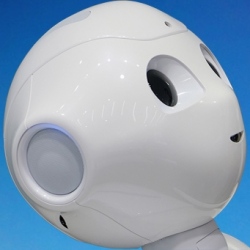
We are in a period of breakneck and breakthrough digital transformation, driven by a massive marketplace shift, namely, artificial intelligence (AI) and machine learning. Incredibly, though, as this technology proliferates and accelerates, it’s not just massive enterprises reaping the benefits.
Today, everyone from solopreneurs to SMBs to major corporations are leveraging AI and machine learning to be better. Better collaborators, better experience architects, and better partners for their customers.
What AI in the workplace looks like, and what the workers want
It’s a profound change in the business landscape, and one that’s showing no signs of slowing down. According to Adobe’s “Future of Work: More than a Machine” study, more than eight in 10 U.S. office workers agree technology can free them from boring tasks. And, for them, the appeal of AI is significant, at least through that lens. Workers are interested in a software-based intelligent personal assistant (72 percent), although they seem to prefer AI help with simple tasks, like to-do and appointment reminders, over complex ones. At least for now.
From where I sit, the impact of AI and machine learning goes far beyond the mundane. More and more, organizations are leaning on AI for cutting-edge applications with at least one of three overarching benefits: reducing costs, boosting efficiency, and driving epic breakthroughs. They’re powerful, they’re tangible, and they’re advantages any organization can get behind. And, not surprisingly, they are fueling the explosive growth of AI and machine learning.
1. Reducing costs
It’s easy to think about automation simply as the antidote to repetitive tasks. Since the beginning of business, humans have often been the only way to get work done. Then, machines began to automate physical labor. Today, machine learning is able to automate increasing swaths of mental labor, allowing people to apply their valuable time and talent to other areas of the business.
If a task can be discreetly broken up into sub-tasks and those sub-tasks can be performed in one second or less, it can likely be automated, if not today then in the very near future. Reviewing security footage or even medical images and identifying specific elements on those visuals? Automate it. Reading through documents to find the same piece of information in each? Automate it. The more tedious tasks we can take off of our collective plate, the more we can free people to achieve their highest potential while bringing down overall expenses. If automation is a realistic option, business leaders should absolutely embrace it.
2. Boosting efficiency
I think of efficiency gains as employee super powers. With this benefit, you’re still doing the same tasks, but you’re getting more done.
Think about the most ubiquitous AI example: voice recognition. Between Siri and Alexa alone, there’s massive engagement. Nearly half of Americans report using some form of voice recognition, and there are definitive signs these platforms are coming to the workplace. Brooks Brothers, Mitsui USA, WeWork, Vonage, and Capital One are already using Alexa for Business. One expert envisions “a day when office voice assistants will employ voice-biometric authentication, recognize individual speakers, and produce meeting transcriptions and translations,” writes DXC.technology.
In many, if not most personal and business use cases, such voice assistants aren’t replacing anyone’s job. They’re just adding value and efficiency to jobs that already exist.
3. Achieving epic breakthroughs
Breakthroughs happen when someone sheds light on a blind spot. For many organizations, AI and machine learning enable people to overcome those blind spots, working through areas that seemed impossible or where the dots didn’t quite connect. In medicine, that could mean analyzing patient risk or enabling a new diagnostic product to come to market. In manufacturing, it could mean predicting defects before they happen.
Or imagine being able to pull deeper meaning from every document in your company and, as a result, instantly spot patterns and trends. Imagine the advantages to legal teams reviewing contracts during an acquisition, or to medical researchers looking for signals in a sea of studies. In fact, solutions like Adobe Document Cloud, which includes Adobe Acrobat DC, Adobe Sign, and Adobe Scan, already use semantic technology to classify words, paragraphs, and lists to help you search for content easier and faster, for example.
Breakthroughs are about seeing what people previously couldn’t — until AI got in the mix.
Putting it together: What comes NEXT?
I talk to a lot of business leaders about AI and ML, and sci-fi fears about the rise of robots are far removed from our conversations. In tomorrow’s workforce, expect a shift to technology that works on behalf of workers and enterprises as a liberating force. This frees them up to focus on tasks only humans can perform — and tasks they actually want to perform — to move their industries forward.
So the next big question: Regardless of where you are right now, how do you harness the power of AI and machine learning for your business?
It’s simple. Start with the data. Successful AI and machine learning are always anchored in a data-driven strategy — there’s no machine learning if there isn’t a good amount of actionable data at the ready. And “ready” is the operative word: in my experience, many leaders eager to embark on an ML project find their data is less accessible, sizable, understandable, usable, or maintainable than they originally assumed.
At the end of the day, the winners in this seismic shift will be the companies who get it. They’re the ones capturing and acting on real-time data and the ones that are willing to roll up their sleeves, dig in, and deliver. Armed with these insights and intel, companies will use AI and ML to achieve true business impact. Do this and you’ll be among the envelope-pushers and game-changers driving this critical moment in time. In other words, you’ll be exactly where you want to be.
